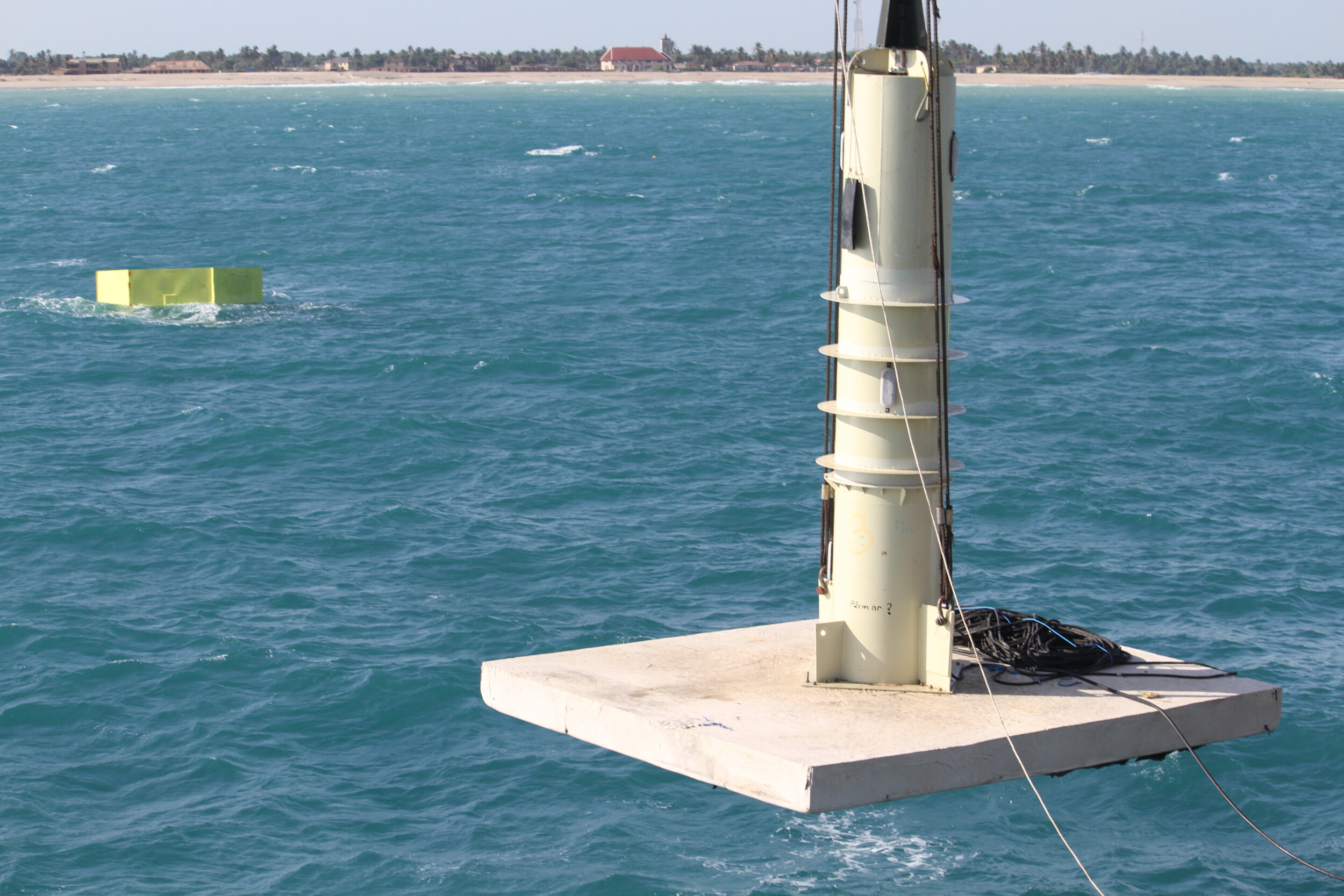The world’s oceans are a source of nearly endless clean power. Adding that power to the grid through wave energy power parks could exponentially accelerate the Green Transition and combat Climate Change. Yet the oceans are much more than a power source; they are vast ecosystems teeming with life and their health is crucial to most everything on Earth. So, at least as far as Seabased is concerned, any extraction of that clean power by wave power parks must be gentle on the ocean environment. This is one of the pillars of our design philosophy: our wave energy parks have to deliver utility-scale, cost-competitive power that is gentle on the environment.
We’re in the process of conducting a full lifecycle CO2 and environmental analysis. Here are some of the design decisions we’ve been able to make toward fighting Climate Change with naturally CO2-free, methane-free renewable wave power while protecting the ocean environment:
No turbines or blades
Algae that has grown on a Seabased generator causes no harm to the equipment and can help the ecosystem.
Seabased produces power inside a steel generator on the ocean floor. The only moving parts that sea creatures are exposed to are large buoys on the surface and the cables that connect each buoy to its generator—the Wave Energy Converter (WEC). The buoys move with the waves, raising and lowering a heavy magnet inside the steel casing of the WEC; that produces the renewable energy. There are no turbines to pull creatures in, no blades, nothing to catch or harm sea life. The large yellow buoys are as easy to avoid as any anchored boat, and tend to serve as a resting place for sea birds. Research has also showed that mussels, algae, and barnacles attach to these buoys, doing no harm to the WEC, and in some cases providing more organic matter on the seabed—food for creatures that live there.
No oils or toxins
Seabased´s wave power parks are designed to emit no chemicals. We coat the buoys and generators using solvent-free marine paints that have passed rigorous environmental testing in Scandinavia. In the past, the materials for the park included half a liter of lubrication grease (for the entire park); we designed it out.
No disturbance of the sea floor
Rather than drill into the sea floor to anchor the WECs, Seabased uses gravity. The wave energy parks are usually placed on relatively flat, barren, sandy, muddy, gravelly, or shell and pebble rock bottoms where few creatures live. We lower the WECs down to this natural ocean floor and heavy concrete bases hold them in place. We lay sea cable from the generators to the electrical converter that weaves the power of many converters, operating on different waves, into a single stream of grid-ready electricity. Another cable goes from the converter to the grid connection point on land. These cables generally settle into the sediment.
Making a home for sea life
Crab has taken up residence in a Seabased foundation.
The wave energy parks become no-fishing zones. In some areas, this has resulted in the parks serving as artificial reefs where sea life can thrive. Research has shown that that population can spill outside the parks, so the fishing industry benefits as well. We can design the bases of the generators with holes that provide a hard-walled type of shelter many animals prefer. Normally, these creatures seek out rocks or coral areas for their habitats, but they adopt these holes in the bases as their habitat. This increases biodiversity, which is essential for environmental health.
Reducing mining for materials
Wherever possible, we use recycled steel and ferrite magnets which are easily accessible and don’t require the types of mining used in rare earth metal mining—often associated with human rights violations.
Simplifying installation and maintenance
Installation of a Seabased generator
Installing equipment in the ocean requires boats, and boats use fuel. Seabased’s WECs can travel to the location where they will be installed in containers on normal cargo ships. So they don’t require specialized boats or extra burning of fossil fuels. Because the WECs are relatively small, they can be installed in a few days, using mostly smaller boats. The smaller the boat, the shorter the time, the less fuel consumed. And Seabased’s maintenance is minimal—a yearly visual inspection and switching out the electrical converters every five years. A 2MW wave energy power park has 20 generators and one converter.
What we don’t know
Research suggests that any noise or electromagnetic waves emitted from our equipment is minimal and doesn’t interfere with the normal behavior or health of sea life. Our installations are relatively small compared to the sea cables crisscrossing the oceans to carry the internet and other things.
However, this is a nascent technology, and we plan to monitor and continually improve it in terms of not only performance and cost reduction but also reduction of our impact on the natural environment.
As much as possible, we want Seabased’s wave energy parks to disappear into the coastline (although not completely for the safety of local shipping traffic). We want the energy of the ocean, that works 24/7, to be captured in a way that works—as naturally as possible—with the ecosystem, not only of the ocean but of the communities where our parks are installed.
In the changes ahead, to combat Climate Change, we must constantly revisit how the choices we’re making as a species impact the delicate ecosystems that comprise the natural balance. That’s always been Seabased’s goal and always will.




